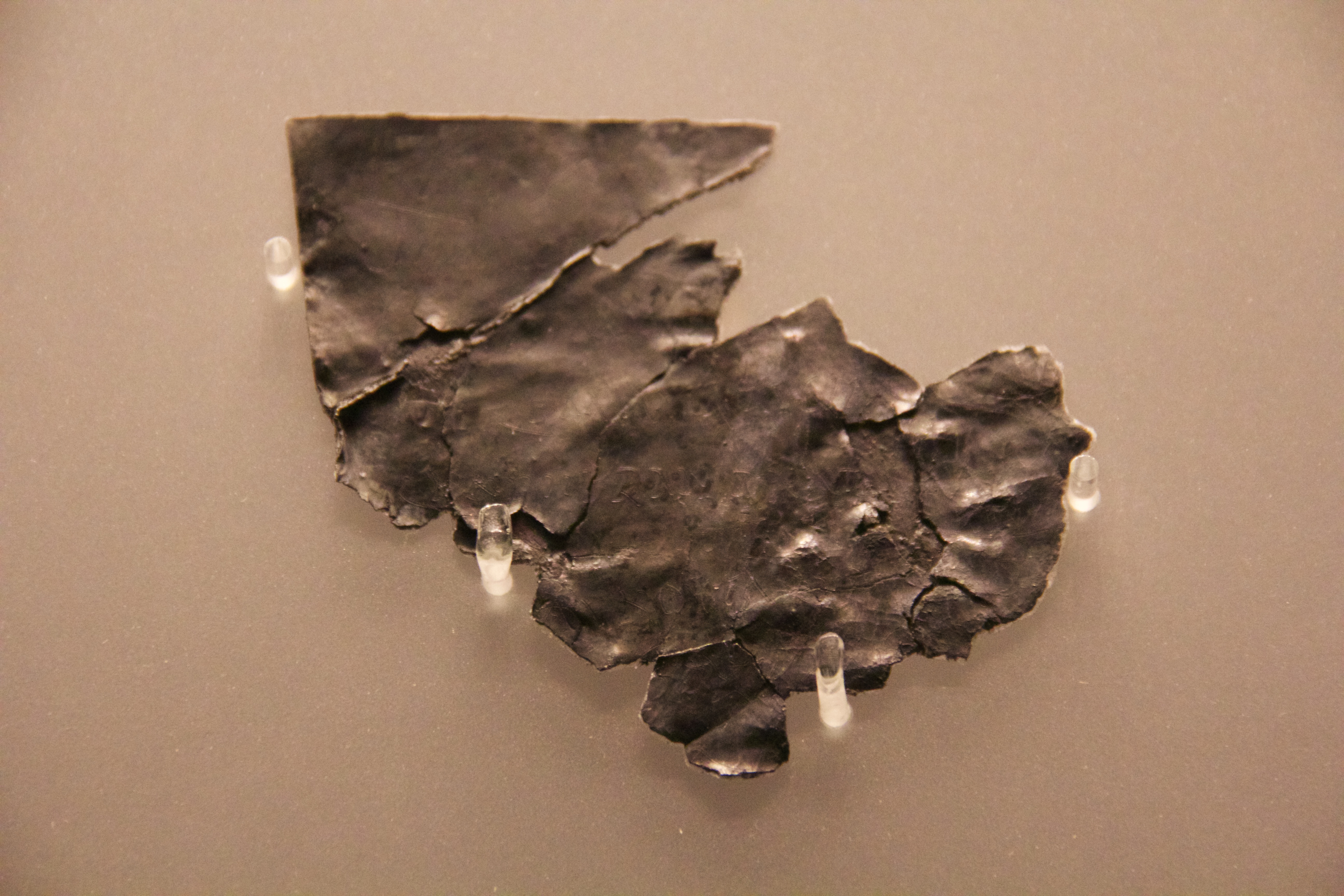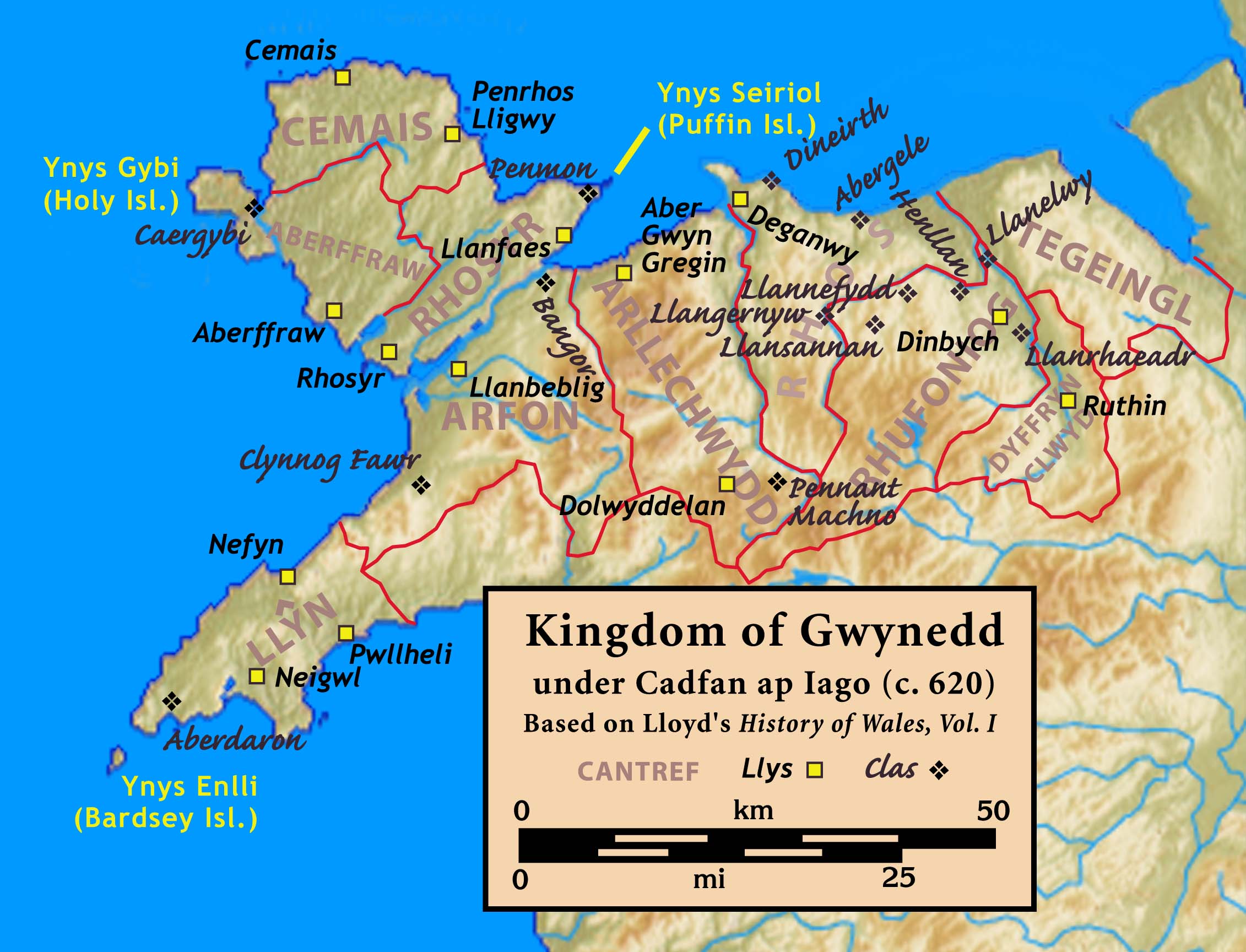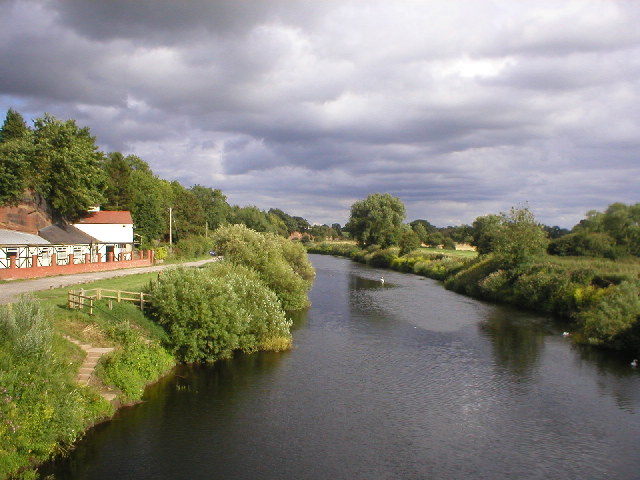|
River Dee, Wales
The River Dee (, ) flows through North Wales and Cheshire, England. The majority of the river is located in Wales, with the stretch between Aldford and Saltney within England and two other sections forming the border between the two countries. The length of the section from Bala to Chester is . The river rises on Dduallt in Snowdonia and flows east through Bala Lake, Corwen, and Llangollen. It turns north near Overton-on-Dee and forms part of the England–Wales border before fully entering England near Aldford, north-east of Wrexham. It flows through Chester then re-enters Wales near Saltney; the final section is canalised and discharges to the Irish Sea via an estuary long. History The River Dee was the traditional boundary of the Kingdom of Gwynedd in Wales for centuries, possibly since its founding in the 5th century. It was recorded in the 13th century (in mainstream Middle English orthography, lacking the letters v and w) as ''flumen Dubr Duiu''; the name appe ... [...More Info...] [...Related Items...] OR: [Wikipedia] [Google] [Baidu] |
Llangollen
Llangollen () is a town and community (Wales), community, situated on the River Dee, Wales, River Dee, in Denbighshire, Wales. Its riverside location forms the edge of the Berwyn range, and the Dee Valley section of the Clwydian Range and Dee Valley Area of Outstanding Natural Beauty, with the easternmost point of the Dee Valley Way being within the town. At the 2021 United Kingdom census, 2021 census the community had a population of 3,603. History Llangollen takes its name from the Welsh ''llan'' meaning "a religious settlement" and Saint Collen, a 7th-century monk who founded a church beside the river. St Collen is said to have arrived in Llangollen by coracle. St Collen’s Church, Llangollen, St Collen’s Church is the only church in Wales dedicated to St Collen, and he may have had connections with Colan, Cornwall, Colan in Cornwall and with Langolen in Brittany. Above the town to the north is Castell Dinas Brân, a stronghold of the Princes of Kingdom of Powys, Powys ... [...More Info...] [...Related Items...] OR: [Wikipedia] [Google] [Baidu] |
North Wales
North Wales ( ) is a Regions of Wales, region of Wales, encompassing its northernmost areas. It borders mid Wales to the south, England to the east, and the Irish Sea to the north and west. The area is highly mountainous and rural, with Snowdonia, Snowdonia National Park ( and the Clwydian Range and Dee Valley (), known for its mountains, waterfalls and trails, wholly within the region. Its population is concentrated in the North East Wales, north-east and northern coastal areas, with significant Welsh-speaking populations in its North West Wales, western and rural areas. North Wales is imprecisely defined, lacking any exact definition or administrative structure. It is commonly defined administratively as its six most northern Principal areas of Wales, principal areas, but other definitions exist, with Montgomeryshire historically considered to be part of the region. Those from North Wales are sometimes referred to as "Gogs" (); in turn, those from South Wales are sometimes cal ... [...More Info...] [...Related Items...] OR: [Wikipedia] [Google] [Baidu] |
Common Brittonic
Common Brittonic (; ; ), also known as British, Common Brythonic, or Proto-Brittonic, is a Celtic language historically spoken in Britain and Brittany from which evolved the later and modern Brittonic languages. It is a form of Insular Celtic, descended from Proto-Celtic, a theorized parent language that, by the first half of the first millennium BC, was diverging into separate dialects or languages. Pictish is linked, most probably as a sister language or a descendant branch. Evidence from early and modern Welsh shows that Common Brittonic was significantly influenced by Latin during the Roman period, especially in terms related to the church and Christianity. By the sixth century AD, the languages of the Celtic Britons were rapidly diverging into Neo-Brittonic: Welsh, Cumbric, Cornish, Breton, and possibly the Pictish language. Over the next three centuries, Brittonic was replaced by Scottish Gaelic in most of Scotland, and by Old English (from which descend M ... [...More Info...] [...Related Items...] OR: [Wikipedia] [Google] [Baidu] |
Middle English Orthography
Middle English (abbreviated to ME) is a form of the English language that was spoken after the Norman Conquest of 1066, until the late 15th century. The English language underwent distinct variations and developments following the Old English period. Scholarly opinion varies, but the University of Valencia states the period when Middle English was spoken as being from 1150 to 1500. This stage of the development of the English language roughly coincided with the High and Late Middle Ages. Middle English saw significant changes to its vocabulary, grammar, pronunciation, and orthography. Writing conventions during the Middle English period varied widely. Examples of writing from this period that have survived show extensive regional variation. The more standardized Old English literary variety broke down and writing in English became fragmented and localized and was, for the most part, being improvised. By the end of the period (about 1470), and aided by the invention of the print ... [...More Info...] [...Related Items...] OR: [Wikipedia] [Google] [Baidu] |
Kingdom Of Gwynedd
The Kingdom of Gwynedd (Medieval Latin: ; Middle Welsh: ) was a Wales in the Early Middle Ages, Welsh kingdom and a Roman Empire Succession of states, successor state that emerged in sub-Roman Britain in the 5th century during the Anglo-Saxon settlement of Britain. Based in northwest Wales, the list of rulers of Gwynedd, rulers of Gwynedd repeatedly rose to dominance and were acclaimed as "King of the Britons" before losing their power in civil wars or invasions. The kingdom of Gruffydd ap Llywelynthe King of Wales from 1055 to 1063was shattered by a Timeline of conflict in Anglo-Saxon Britain, Saxon invasion in 1063 just prior to the Norman invasion of Wales, but the House of Aberffraw restored by Gruffudd ap Cynan slowly recovered and Llywelyn the Great of Gwynedd was able to proclaim the Principality of Wales at the Aberdyfi gathering of Welsh princes in 1216. In 1277, the Treaty of Aberconwy between Edward I of England and Llywelyn's grandson Llywelyn ap Gruffudd granted pe ... [...More Info...] [...Related Items...] OR: [Wikipedia] [Google] [Baidu] |
Irish Sea
The Irish Sea is a body of water that separates the islands of Ireland and Great Britain. It is linked to the Celtic Sea in the south by St George's Channel and to the Inner Seas off the West Coast of Scotland in the north by the North Channel (Great Britain and Ireland), North Channel. Anglesey, North Wales, is the largest island in the Irish Sea, followed by the Isle of Man. The term ''Manx Sea'' may occasionally be encountered (, , ). On its shoreline are Scotland to the north, England to the east, Wales to the southeast, Northern Ireland and the Republic of Ireland to the west. The Irish Sea is of significant economic importance to regional trade, shipping and transport, as well as fishing and power generation in the form of wind power and nuclear power plants. Annual traffic between Great Britain and Ireland is over 12 million passengers and of traded goods. Topography The Irish Sea joins the North Atlantic at both its northern and southern ends. To the north, the ... [...More Info...] [...Related Items...] OR: [Wikipedia] [Google] [Baidu] |
Canalised
River engineering is a discipline of civil engineering which studies human intervention in the course, characteristics, or flow of a river with the intention of producing some defined benefit. People have intervened in the natural course and behaviour of rivers since before recorded history—to manage the water resources, to protect against flooding, or to make passage along or across rivers easier. Since the Yuan Dynasty and Ancient Roman times, rivers have been used as a source of hydropower. From the late 20th century onward, the practice of river engineering has responded to environmental concerns broader than immediate human benefit. Some river engineering projects have focused exclusively on the restoration or protection of natural characteristics and habitats. Hydromodification Hydromodification encompasses the systematic response to alterations to riverine and non-riverine water bodies such as coastal waters (estuaries and bays) and lakes. The U.S. Environmental ... [...More Info...] [...Related Items...] OR: [Wikipedia] [Google] [Baidu] |
Overton-on-Dee
Overton () or Overton-on-Dee is a village and Community (Wales), community in Wrexham County Borough, Wales. A former ancient borough, borough and market town, it is situated close to the England–Wales border, Welsh-English border on the edge of an escarpment that winds its way around the course of the River Dee, Wales, River Dee, from which Overton-on-Dee derives its name. The community of Overton, which also includes the village of Lightwood Green and a number of small hamlets including Knolton, had a total population of 1,276 at the 2001 census,Overton Community Office for National Statistics increasing to 1,382 at the 2011 Census. Geography Overton is from Wrexham and exactl ...[...More Info...] [...Related Items...] OR: [Wikipedia] [Google] [Baidu] |
Corwen
Corwen is a town and community in the county of Denbighshire in Wales. Historically, Corwen was part of the county of Merionethshire. Corwen stands on the banks of the River Dee beneath the Berwyn mountains. The town is situated west of Llangollen and south of Ruthin. At the 2011 Census, Corwen (community and ward) had a population of 2,325, decreasing slightly from the 2001 population of 2,398, The community, with an area of , includes Corwen and the surrounding villages of Carrog, Clawdd Poncen and Glyndyfrdwy. The Office for National Statistics identifies Corwen Built-up area with a 2011 population of 477 and an area of . History Corwen is best known for its connections with Owain Glyndŵr, who was proclaimed Prince of Wales on 16 September 1400, from his nearby manor of Glyndyfrdwy, which began his fourteen-year rebellion against English rule. A statue of Glyndŵr by the sculptor Simon van de Put was installed in The Square in Corwen in 1995, and in 2007 it was ... [...More Info...] [...Related Items...] OR: [Wikipedia] [Google] [Baidu] |
River Source
The headwater of a river or stream is the geographical point of its beginning, specifically where surface runoff water begins to accumulate into a flowing channel of water. A river or stream into which one or many tributary rivers or streams flows has many headwaters, these being all of the individual headwaters of its tributaries. Each headwater is one of the river or stream's sources, as it is the place where surface runoffs from rainwater, meltwater, or spring water begin accumulating into a more substantial and consistent flow that becomes a Strahler number, first-order tributary of that river or stream. The tributary with the longest channel (geography), channel of all the tributaries to a river or stream, such length measured from that tributary's headwater to its mouth where it discharges into the river or stream, is the main stem of the river or stream in question. Definition The United States Geological Survey (USGS) states that a river's "length may be considered to be ... [...More Info...] [...Related Items...] OR: [Wikipedia] [Google] [Baidu] |
Bala, Gwynedd
Bala () is a town and community (Wales), community in Gwynedd, Wales. Formerly an Urban district (Great Britain and Ireland), urban district, Bala lies in the Historic counties of Wales, historic county of Merionethshire, at the north end of Bala Lake (). According to the 2021 United Kingdom census, 2021 census, Bala had a population of 1,999 and 72.5 per cent of the population could speak Welsh language, Welsh. Toponym The Welsh word ''bala'' refers to the outflow of a lake. History Tomen Y Bala ( high by diameter) is a tumulus or "moat-hill", formerly thought to mark the site of a Roman Empire, Roman camp. In the 18th century, the town was well known for the manufacture of flannel, stockings, gloves and hosiery. The large stone-built theological college, ''Coleg y Bala'', of the Calvinistic Methodists and the grammar school (now Ysgol y Berwyn), which was founded in 1712, are the chief features, together with the statue of the Rev. Thomas Charles (1755–1814), the theol ... [...More Info...] [...Related Items...] OR: [Wikipedia] [Google] [Baidu] |
England–Wales Border
The England–Wales border, sometimes referred to as the Wales–England border or the Anglo-Welsh border, runs for from the Dee estuary, in the north, to the Severn estuary in the south, separating England and Wales. It has followed broadly the same line since the 8th century, and in part that of Offa's Dyke; the modern boundary was fixed in 1536, when the former marcher lordships which occupied the border area were abolished and new Counties of the United Kingdom, county boundaries were created. The administrative boundary of Wales was confirmed in the Local Government Act 1972. Whether Monmouthshire (historic), Monmouthshire was part of Wales, or an English county treated for most purposes as though it were Welsh, was also settled by the 1972 Act, which included it in Wales. Geography The modern boundary between Wales and England runs from the salt marshes of the Dee estuary adjoining the Wirral Peninsula, across reclaimed land to the River Dee, Wales, River Dee at Sa ... [...More Info...] [...Related Items...] OR: [Wikipedia] [Google] [Baidu] |






